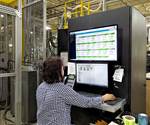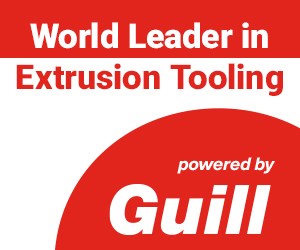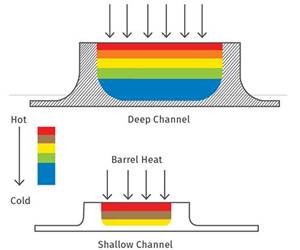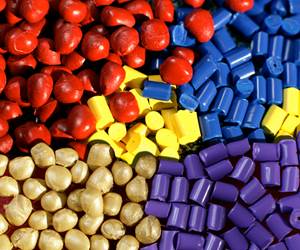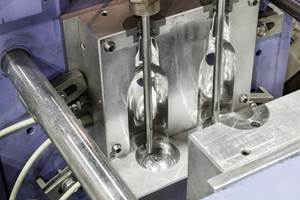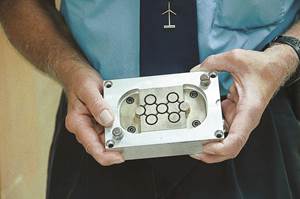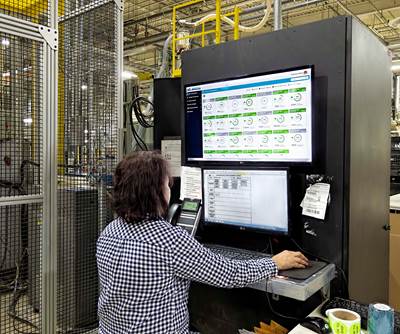Do You Have Screw Wear?
It’s generally caused by metal-to-metal contact, and your first indicator will be poor melt quality.
Unless you are running abrasive fillers, screw wear is generally the result of metal-to-metal contact between the barrel liner and the screw flights. Wear can be quite slow or very rapid, depending on the contact force between the screw flight and the barrel liner and the lubricating effect of the polymer.
With proper screw/barrel alignment and a filled screw, wear typically occurs mostly in the melting or compression section of the screw. In the compression section, the polymer is forced through a smaller and smaller area; as it moves through that section the melt is often being compressed 2-5:1. If all the melt gets squeezed out, the channel will momentarily be filled with solids. Since a tapered-root screw is really a powerful compounded spiral wedge, it can develop enormous pressure when filled with incompressible solids. That’s the case regardless of whether it’s a conventional or barrier-type screw.
When the channel becomes filled entirely with solids and plugging occurs, there is a high radial or unbalanced side pressure on the screw. This pushes or deflects the screw, sometimes with tremendous force, against the opposite side of the barrel wall, forcing out the lubricating film of polymer. As a result, the surfaces are then rubbing metal-to-metal while under high load with little or no lubricating polymer film between the screw flights and the barrel liner. The loading force and the characteristics of the materials selected for the screw-flight hard facing and the barrel liner then determine the wear rate. The type of polymer also has an effect; crystalline polymers develop much higher plugging forces than amorphous polymers and hence generally higher wear issues.
How do you know this is happening? Your output may not be significantly affected until the screw/barrel clearance becomes fairly large. Most likely, the first thing you’ll notice is a loss of melting rate as evidenced by a gradual decrease in the melt quality. Using the classic melting model that fits most polymers, the melt film forms primarily from shearing the solids against the barrel wall, thereby changing mechanical energy (screw rotation) into thermal energy (melting).
As the clearance increases, the screw flight does not scrape the barrel wall as closely during rotation. This leaves a thicker layer of melt against the barrel wall. That layer gets hotter but does not efficiently transfer the heat to the underlying solid bed of unmelted polymer, due to the polymer’s poor thermal conductivity. The rate of heat developed in the film then—that is, the melting rate—is greatly diminished by the greater melt-film thickness. A simplified measure of the melting rate published in the 1970 book, Engineering Principles of Plasticating Extrusion, by Zehev Tadmor and Imrich Klein, illustrates the effect:
Rate of heat into the film= Km/α(TB-Tm) +[μ (Vj)2/2α]
The first part of the equation is the heat conducted from the barrel into the film. But once the film temperature approaches the barrel temperature, it no longer contributes to melting, leaving only the viscous dissipation term:
[μ (Vj)2/2α]
In that term, μ is the viscosity, which is dropping as the film gets hotter, and α is the melt-film thickness, which is increasing. (Vj)2 is the square of the solid-bed velocity in the down-channel and barrel direction. Solid-bed velocity is divided by 2α, or half of the melt-film thickness. So even if the solid-bed velocity remains the same, the viscous dissipation or melting decreases by the lowered viscosity and the increasing melt-film thickness.
This wear in the melting section of the screw is often not so easily detected because it can be corrected by very small increases in screw speed over time. Eventually the most telling effect is the deterioration of the melt quality to a degree that it causes quality problems in the extruded product. Since wear usually happens over an extended period of time, melt-quality issues are often attributed to many other causes, losing valuable time in making the proper corrections. Moreover, if a screw design originally had excess melting capacity due to its length, depths, and other design features, or if it contains a high- shear dispersive-mixing section, wear may not be detected in the performance for long after the screw would be considered worn by most standards.
So how do you troubleshoot wear in the compression or melting section without pulling the screw periodically? The answer goes back to an earlier column suggesting you benchmark every screw with every polymer as a plant-management tool (see Oct. ’11 column). As the screw wears and the melt-film thickness increases, the film in that area tends to get hotter. That will be reflected in either an override of the barrel temperature in the melting area, or a significant increase in the amount of cooling in that area. Perhaps more important will be the deterioration in melt quality compared with the benchmark log. What’s more, there will usually be a small decrease in output relative to the original conditions.
ABOUT THE AUTHOR
Jim Frankland is a mechanical engineer who has been involved in all types of extrusion processing for more than 40 years. He is now president of Frankland Plastics Consulting, LLC. Contact jim.frankland@comcast.net or (724)651-9196.
Related Content
The Importance of Barrel Heat and Melt Temperature
Barrel temperature may impact melting in the case of very small extruders running very slowly. Otherwise, melting is mainly the result of shear heating of the polymer.
Read MoreFundamentals of Polyethylene – Part 6: PE Performance
Don’t assume you know everything there is to know about PE because it’s been around so long. Here is yet another example of how the performance of PE is influenced by molecular weight and density.
Read MoreThe Importance of Melt & Mold Temperature
Molders should realize how significantly process conditions can influence the final properties of the part.
Read MoreHow to Select the Right Tool Steel for Mold Cavities
With cavity steel or alloy selection there are many variables that can dictate the best option.
Read MoreRead Next
People 4.0 – How to Get Buy-In from Your Staff for Industry 4.0 Systems
Implementing a production monitoring system as the foundation of a ‘smart factory’ is about integrating people with new technology as much as it is about integrating machines and computers. Here are tips from a company that has gone through the process.
Read MoreFor PLASTICS' CEO Seaholm, NPE to Shine Light on Sustainability Successes
With advocacy, communication and sustainability as three main pillars, Seaholm leads a trade association to NPE that ‘is more active today than we have ever been.’
Read More
.jpg;width=70;height=70;mode=crop)
